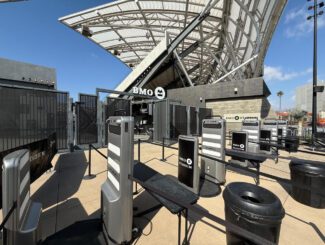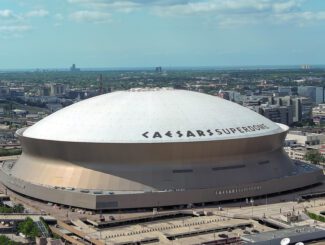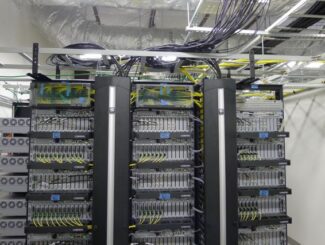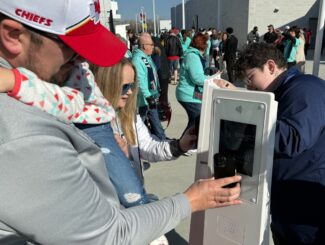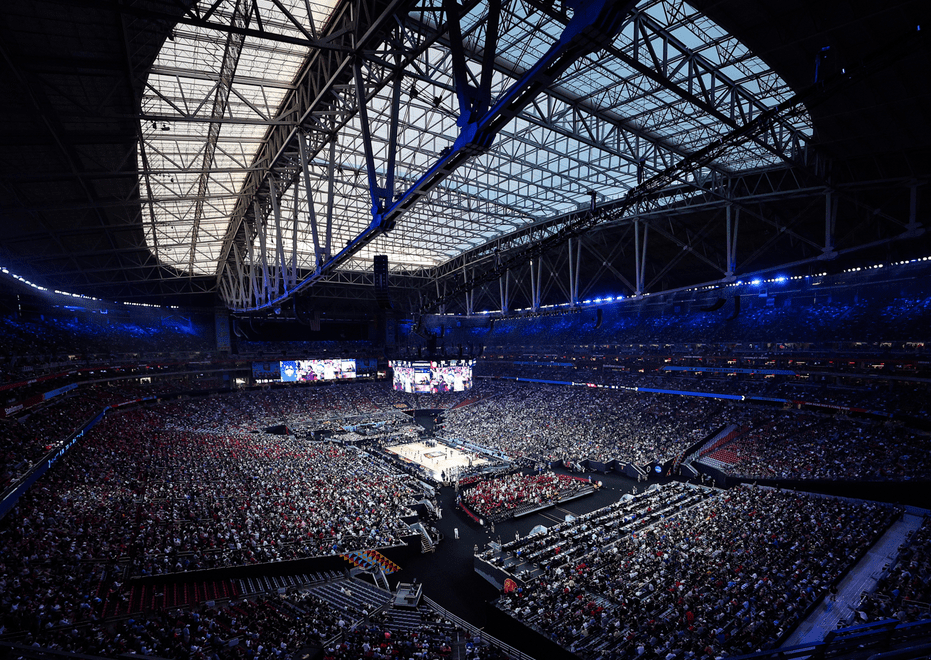
If your venue is going to host the Final Four, it never hurts to host the Super Bowl the year before, at least from a wireless network perspective.
Thanks to network infrastructure investments made ahead of Super Bowl LVII in 2023, State Farm Stadium in Glendale, Ariz., was more than prepared for the wireless demands of the NCAA 2024 men’s Final Four championship weekend, which took place at the venue on April 6 and 8. According to wireless carriers, the stadium’s distributed antenna system (DAS) saw a measured total of 35.6 terabytes of traffic over the weekend, while according to the NCAA, the stadium’s Wi-Fi network saw a combined total of 31.2 TB of traffic over the two days of live action.
MatSing antennas help cover floor seating
On the cellular side of things, the year-earlier upgrade of the DAS hosted by Crown Castle using equipment from CommScope and MatSing needed very little in the way of changes, according to representatives from Verizon and AT&T.
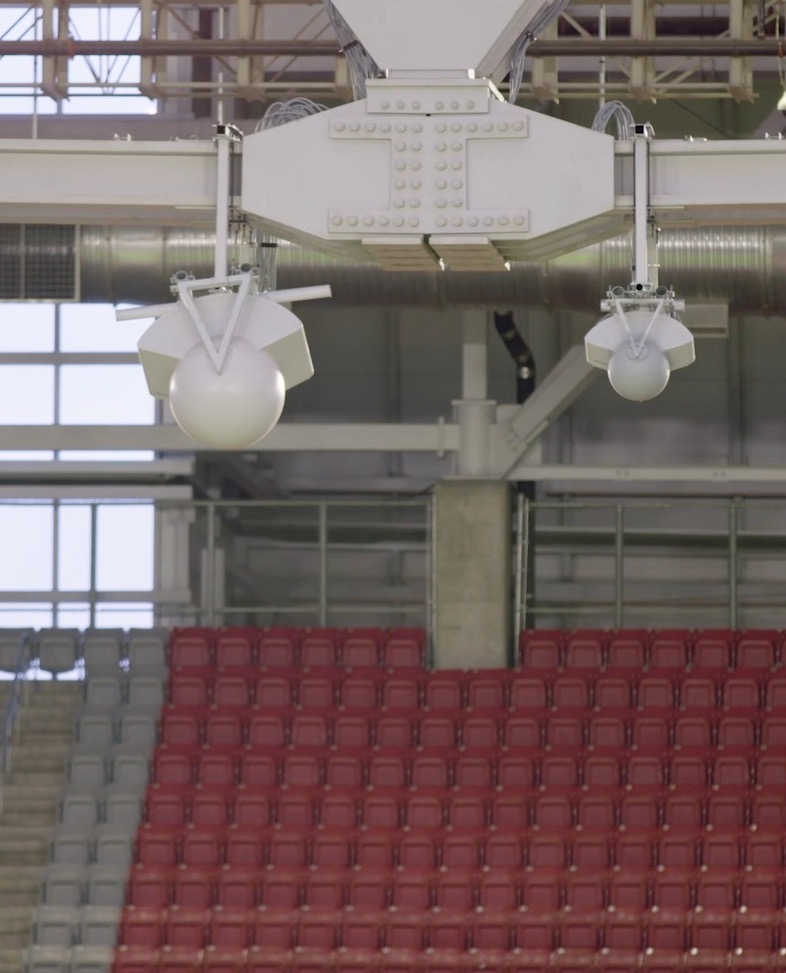
While hosting a basketball game has one big difference over a football game — the presence of fans in temporary seating installed over the football field — the carriers said the easy tuning flexibility of the lens antennas from MatSing that were installed ahead of the Super Bowl allowed for a simple way to provide coverage for the close-to-the-court seating without having to install any new equipment. The MatSing lens antennas are known for their ability to send signals a long distance, which makes them a good fit for stadiums where the space between electronics and seats can sometimes be technically daunting.
“The MatSing antennas are really nice technology — they allowed us to steer the signal to where the demand was,” said Steve Levar, Verizon’s associate vice president of network engineering for the Southwest region. State Farm Stadium has eight MatSing antennas as part of its DAS, installed in the stadium’s roof infrastructure.
According to Verizon, its customers used 16.8 TB of data on the two Saturday semifinal games, and another 10.8 TB of data for Monday’s championship. According to AT&T, its customers used 8 TB of data during the championship game (AT&T did not provide statistics for its customers for Saturday). Both carrier figures include data used “in and around” the stadium, a space that usually includes outdoor areas like parking and stadium plazas where fans congregate before and after events. T-Mobile, which also is part of the stadium’s DAS, does not report traffic numbers from events.
On the Wi-Fi side, according to the NCAA the stadium’s network saw 18.3 TB of data used on Saturday, with a peak of 33,900 concurrently connected devices out of 54,721 unique users of the network. For Monday’s championship game there was 12.9 TB of data used, with 32,743 peak concurrent connections out of 52,387 unique devices on the network. There were 74,720 fans in attendance for the Saturday games and 74,423 for the championship game.



